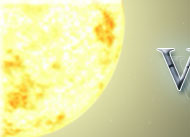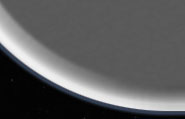Before your observation you have to realize that the Venus will shade the impermissible number of the solar radiation and the Sun won’t lose nothing of its dazzling brightness. We know several methods of observation and they are exacting for equipment differently.
The Observation with naked eye
Theoretically we can observe the transit of the Venus only with naked eye. The Venus during that phenomenon has apparent diameter about 1´ and it is just the limit of visual acuity. During observing it is necessary to protect our eyes with the proper filter - welders´ filters number 13, 14 and special glasses for observing the Sun.
On no account don’t use for direct observation of the Sun: smoke-stained glass, one standard sunglasses on the others, compact disks, diskettes or unexposed colour (black-and-white) films. Those things transmit very dangerous infrared and ultraviolet radiation, which threaten our eyesight. IR can "boil" your eye and UV can bring on a grey cataract.
The method of projection
It means that the picture of the sun will be projected on the screen. We need only than a working telescope on a tripod (it is possible to use a binocular) Behind an ocular we fix a screen that could be made of e.g. wood board or piece of carton covered with white paper. You must set up a screen for having a good-quality picture. During observation it is necessary to control temperature of optics and if required to stop your observation for a while. Keep clear of site something near focus of your telescope. Optical parts (ocular) could be destroyed by over heating.
The observation with solar filters
These filters are suitable for small telescopes only. The problem of bigger telescopes is connected with overheating of optics, solar filter could be destroyed by heat and it would have catastrophic effect for the observer’s eyesight. It is necessary to discontinue observation very often. Generally we can say that filters are cheap but not so safe.
The objective solar filters
These filters have a great advantage. They don’t load optics of telescope by intensive solar radiation and it is possible to observe without pauses. We have several types of solar filters. From glass panels, which are relatively expensive and which are applied at specialized workplaces, where they probably use the Herschel’s prism, we can arrive to the films. These films are cheap and accessible to amateurs. The best, current and the most available film is Baader AstroSolar Safety Film. Smaller (21 x 30cm) costs about 600 Kč and larger (50 x 100cm) costs about 1900 Kč. In the Czech Republic films are distributed by firm Dalekohledy Matoušek and SUPRA Praha.
The Herschel Helios cope ocular
This method is the safest which you can choose. The Herschel ocular reflexes majority of light out of observer’s eye. But it is necessary to pay for this safety, because The Herschel ocular is very expensive. They need professional manipulation so it is reason why they are used at observatories and other workplaces.
Practically we can apply all these methods for recording times. In this case we can take photos in regular intervals and we can get final time of linear interpolation.













